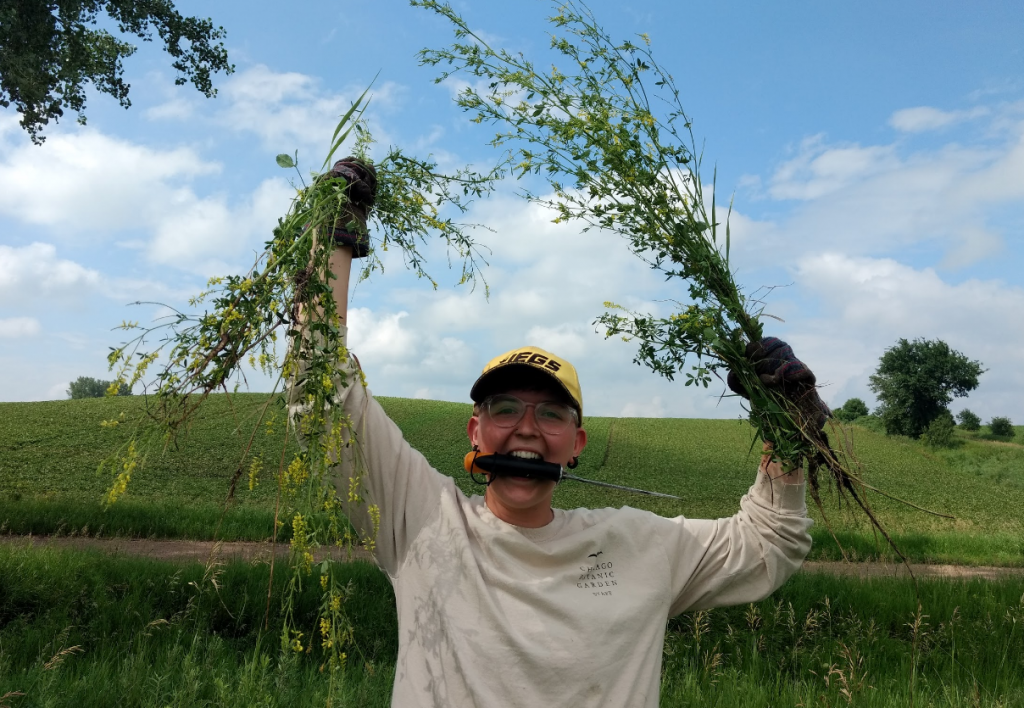Today commenced with a group photo, now featuring the eastern contingent of Team Echinacea!

The rainy weather limited our activities in the morning, but Stuart gave Jay, Julie and I a crash course in weeding sweet clover and bird’s foot trefoil, two weeds invading P1. The rain softens the soil and eases removal of tough tap roots. A little too much rain soaked me as I dug up my first trefoil, and after wrenching it free we fled back to Hjelm House for computer work and lunch.
After lunch we played an icebreaker game which, depending on whether you ask me or Riley, is called either Trainwreck or Shoe Game. We ran back and forth trading spots in a circle like a demented game of musical chairs and learned fun facts about one another, like who prefers to wear socks with sandals and who hates fishing.
Afterwards we trooped out to P2 to check twist ties and make sure we know where to find and how to identify every flowering Echinacea angustifolia head. We visit these plants about every other day and record every change in their condition. We write down their afflictions and celebrate their reproductive success. In short, we cherish them.
This is not the case for their close relatives, Echinacea pallida. The vigorous plants are The Enemy, and we advanced on them with gardening shears to smite their reproductive efforts. E. pallida is not native to Minnesota and could threaten the future of our familiar friend E. angustifolia through competition or outcrossing. We found that the severed heads are quite handy for fencing and flinging across the prairie.


Upon returning to Hjelm House Jay, Julie, Stuart and I took arms against a sea of trefoil and by opposing, ended them—hopefully? It’s tough to tell whether our efforts will be sufficient, as trefoil has a nasty habit of snapping off at the shoot and leaving behind taproots from which new growth springs.

Julie and I battled side-by-side with a root growing horizontally around a stone and the mother of all trefoil. I dug about 7 inches deep in the soil trying to extract the typically threadlike root system, but when it ultimately broke in my hands it still had the circumference of about a dime.

Being plant scientists doesn’t mean we love every plant, and today was a better lesson in that than I’ve ever had before!

Leave a Reply